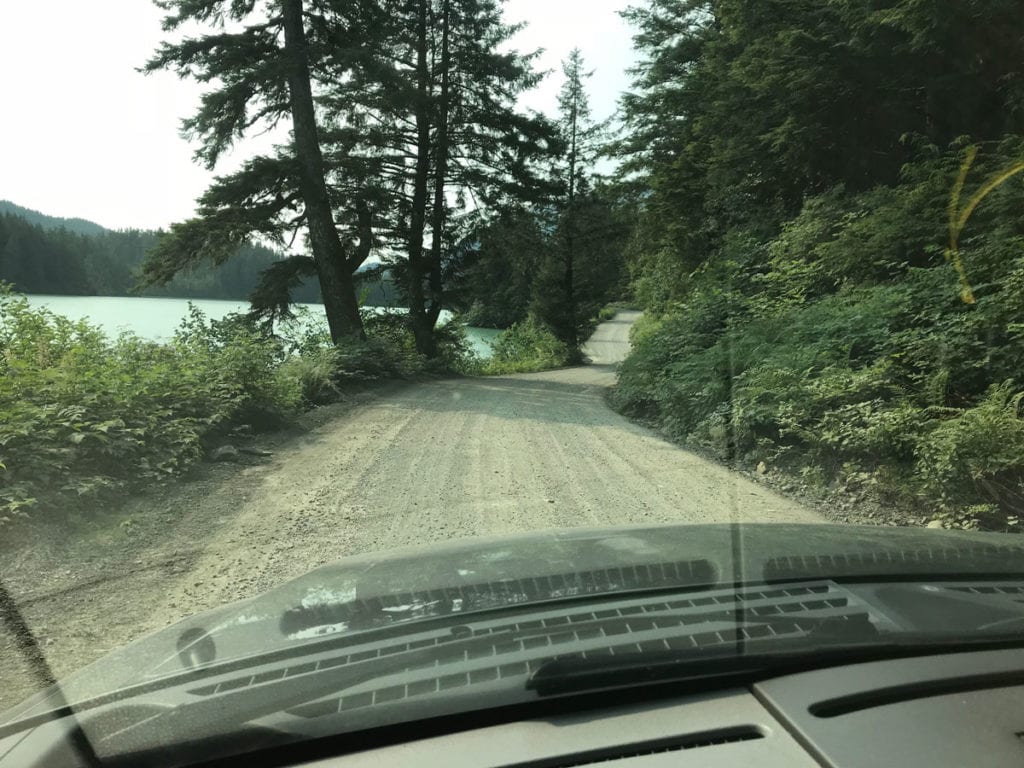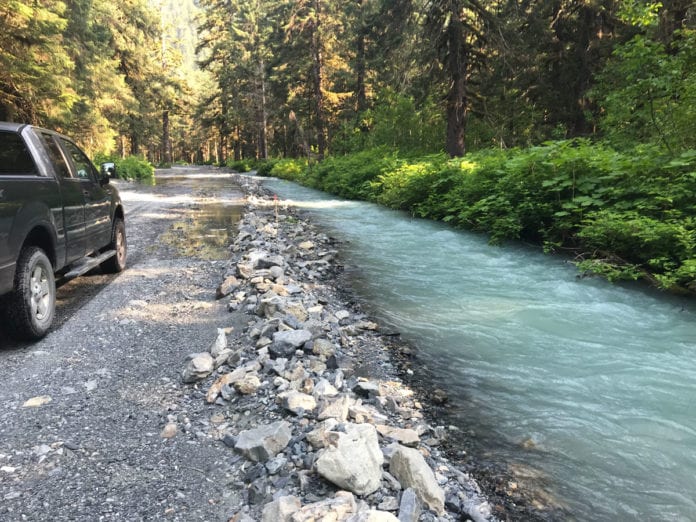
A $2.3 million project to solve continuing flooding issues at the far end of Power Creek Road is underway.
The narrow and often one-lane seven-mile gravel road that winds along the edge of Eyak Lake dates back to the early days of Cordova, and in fact was the longest automobile byway in the area during the days of the Copper River and Northwestern Railway.
Work will begin just beyond the large culvert and turnout near mile six on the road, the location of a popular site for viewing of spawning sockeye salmon and also brown bears attracted by their presence.
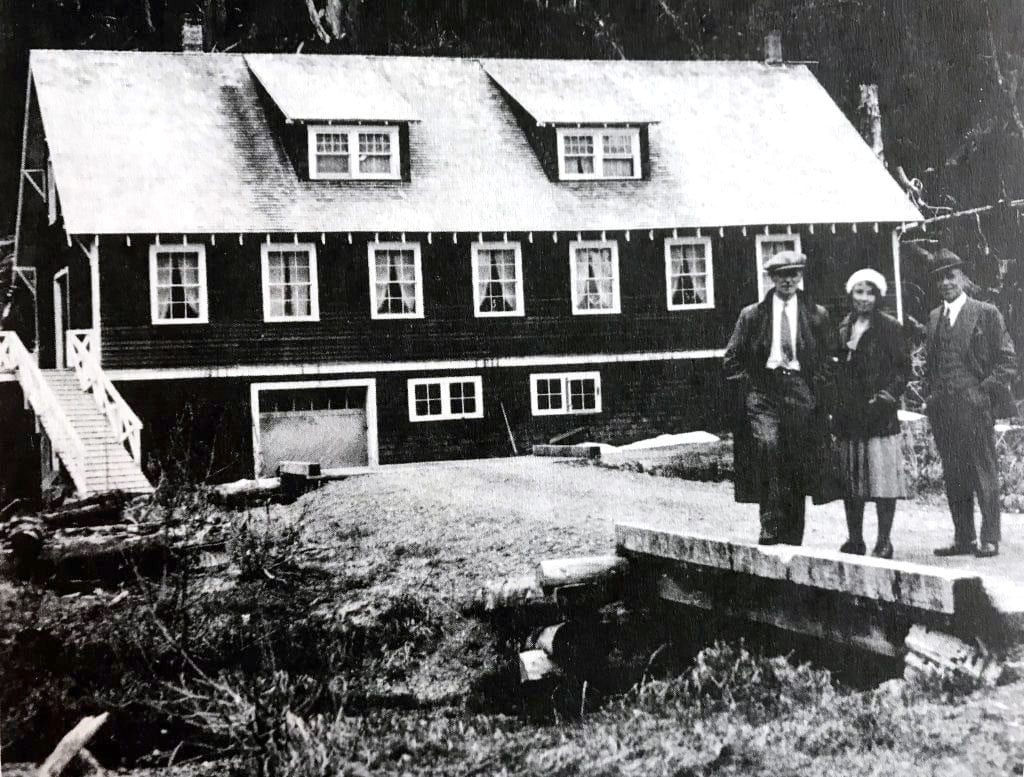
In the early 1920s, a large hatchery facility was located in that area. Lack of funds and failures due to flooding led to its closure, with the buildings being turned over to the Forest Service. It was converted the Bethany Children’s Home in 1938. Only parts of a wooden bridge near the turnout are all that remains.
Ironically, it is flooding and changes in the course of Power Creek just below the former location of a popular American Legion Cabin further up the road that have motivated the necessary road repairs. The cabin, along with a dramatic wooden suspension bridge built across the river at that location by the Civilian Conservation Corp in the mid-’30s, has also vanished with time.
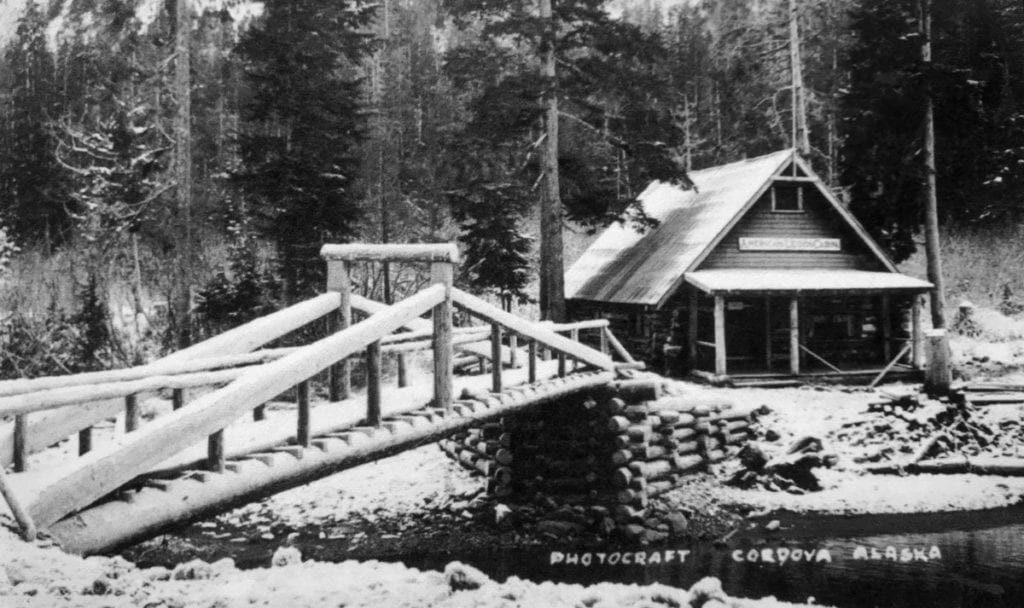
Power Creek Road derives its name from hopes in Cordova’s early days of building a dam for hydroelectric power not far above the end of the road. The project was eventually abandoned when studies indicated the fractured rock would not retain water.
However, in the early ’70s, a successful hydro project was completed by building a dam much further upstream, with the power plant itself located just beyond the end of the road.
The plant, operated by the Cordova Electric Cooperative, has been a major source of power since its completion in 1971. However, the power transmission lines, as well as cables utilized for remote control operations of the site, are buried under the road, and have been repeatedly threatened by the changing course of the river.
Maintaining the state-operated road has been a chronic issue.
“We’ve been fighting flooding problems out there since the days when Tom Justice and Gary Weinrick were working at the state Department of Transportation (DOT) at Mile 13,” said local Airport and DOT Manager Rob Mattson. “So, I guess you would have to ask them how long this has been going on.”
Wilson Construction will be contractor for the project.
“We worked long and hard to get the funding and are glad to see the project will be done by a local firm,” said Clay Koplin, chief executive officer for Cordova Electric Cooperative. “It not only saves money in cost of transporting equipment to Cordova but also puts money back into the local economy.”
It also means a more local approach to traffic issues.
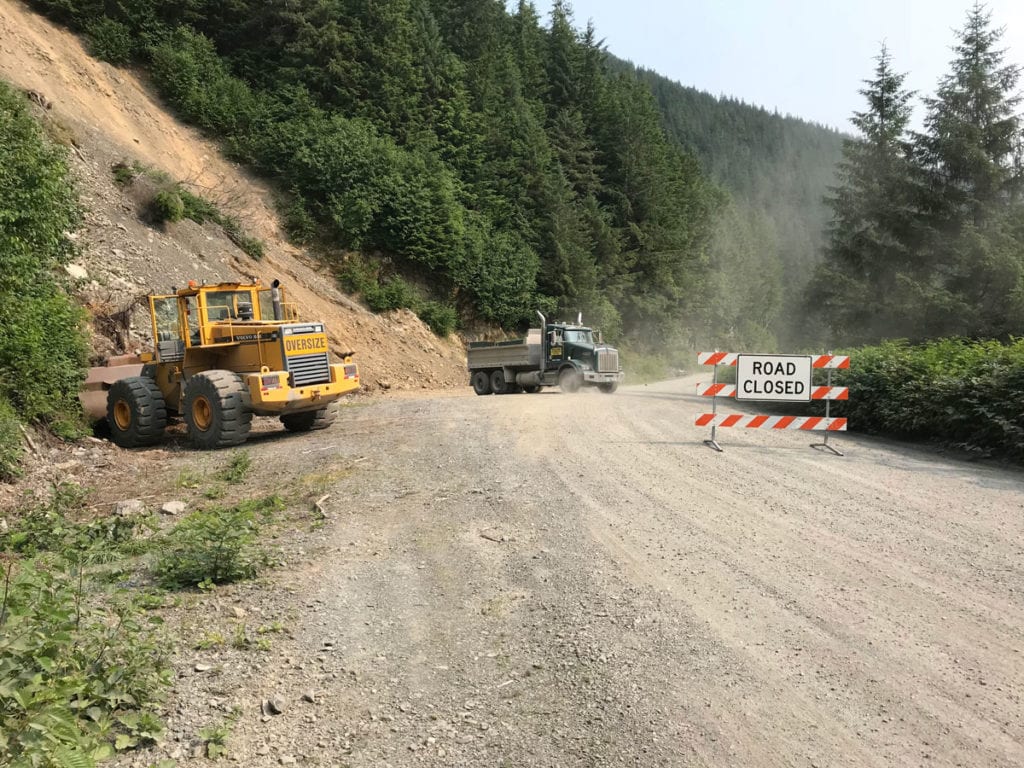
“We’re going to have to close the road from 7 a.m. to 5:30 p.m. during the week,” John Baenen of Wilson Construction said. “The road closure will start just beyond Greg Hamm’s place at roughly five mile. The road is so narrow in places it would be very dangerous for us to be running dump trucks and trying to allow traffic to pass.”
Over 26,000 cubic yards of fill and rock rip-rap will be hauled to the problematic stretch, raising a 4,200-foot stretch of road an average of five feet and creating a rock barrier along the river-side edge to prevent further erosion. Fill for the project will come from the large pit a mile out Whitshed Road, and there will be some blasting necessary to create addition rock.
“Because of the road width”, added Baenen, “we are considering convoying our trucks in a group to and from the landfill. We don’t want them running into each other going in opposite directions and will have to keep them on the inside edge of the road going both ways.”
The project is scheduled to be completed by mid-September.
Baenen described much of Power Creek Road as “a 15 mph road.” He encouraged those who walk along it or engage in the popular unique Cordova tradition of running their dogs (i.e. letting dogs out of their cars to run while they drive along slowly) to perhaps look for other places to do so during the next couple months while trucks are hauling fill.
Beaten noted that the road will be open as far as the spawning stream area during times when they are not working, including the weekends.
He emphasized that safety is a No. 1 priority while completing a project whose origins date back far in Cordova’s history, and the days when Model T Fords were the first vehicles to drive along the edge of Eyak Lake.
